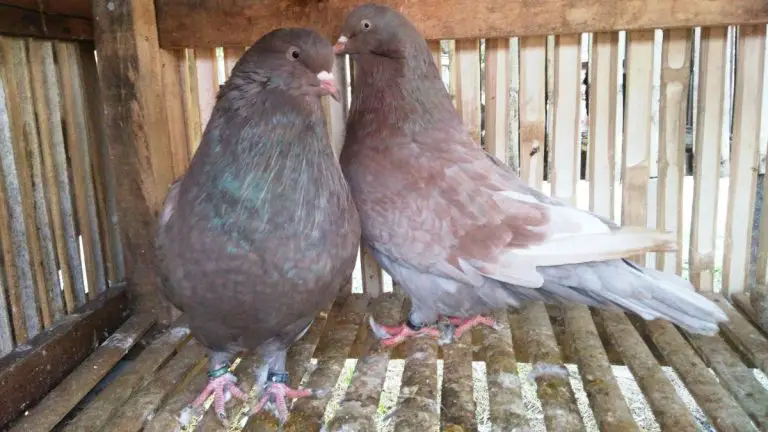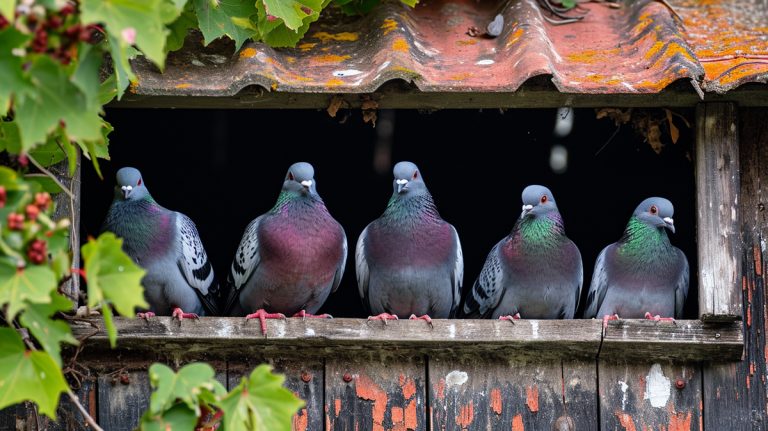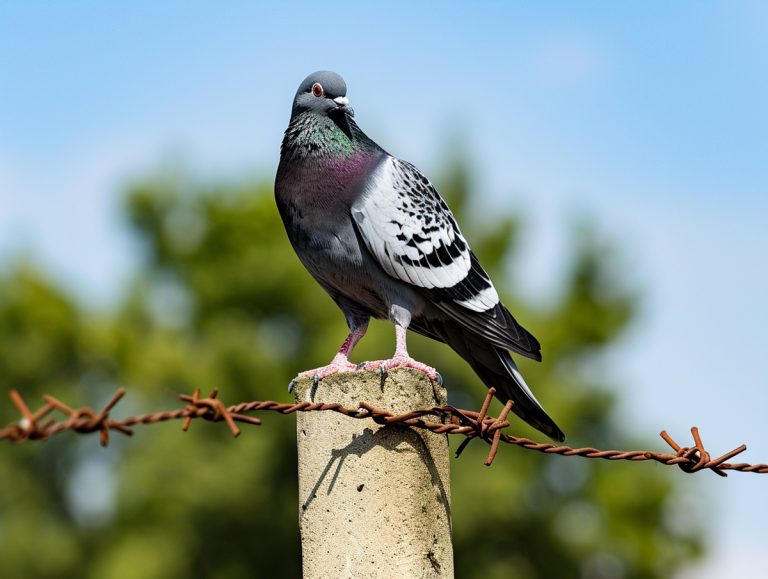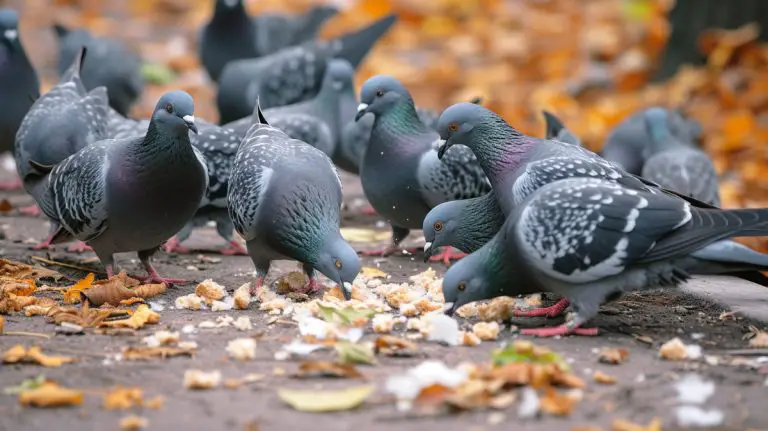Pigeon Genetic Considerations: Breeding Guidelines
Breeding pigeons can be an exciting and rewarding endeavor, but it’s important to understand the genetic considerations involved. As an experienced breeder, I have come to appreciate the impact that genetics can have on the health, appearance, and performance of these remarkable birds. In this article, I’ll delve into the key genetic factors that should be taken into account when breeding pigeons, providing you with the knowledge and insights to make informed decisions for your own breeding program.
When it comes to pigeon breeding, understanding the principles of inheritance is crucial. Genes play a vital role in determining the traits that are passed down from one generation to the next. By familiarizing yourself with the basics of pigeon genetics, you can strategically select breeding pairs to enhance desirable traits while minimizing the risk of genetic disorders. In this article, I’ll break down the fundamental concepts of pigeon genetics, including the inheritance patterns, gene mutations, and the importance of genetic diversity.
In addition to genetics, there are other factors that must be considered when breeding pigeons. Environmental conditions, nutrition, and proper care also play significant roles in the overall success of your breeding program. Throughout this article, I’ll provide practical tips and advice based on my own experiences, helping you navigate the complexities of pigeon genetics to achieve your breeding goals. So, let’s dive in and explore the fascinating world of pigeon genetics and its implications for breeding.
When it comes to breeding pigeons, understanding genetics is crucial. Genetics plays a significant role in determining the health, appearance, and performance of these birds. By comprehending the principles of pigeon genetics, breeders can make informed decisions to achieve their desired breeding goals.
Understanding Pigeon Genetics
Genes are the units of inheritance that pass traits from one generation to the next. They are responsible for the characteristics pigeons exhibit, such as color, size, and even behavior. By understanding how genes work, breeders can predict the traits that offspring are likely to inherit from their parents.

Dominant and Recessive Traits
In pigeon genetics, certain traits are dominant, while others are recessive. Dominant traits are those that will be expressed in an individual even if only one parent carries the gene for that trait. On the other hand, recessive traits require both parents to carry the gene for the trait to be expressed in their offspring. This knowledge enables breeders to select pigeons with desired traits and minimize the expression of undesirable ones.
Inbreeding and Outcrossing
Breeding pigeons involves careful consideration of inbreeding and outcrossing. Inbreeding refers to the mating of closely related pigeons, which increases the likelihood of both desirable and undesirable traits being passed on. Outcrossing, on the other hand, involves mating pigeons from unrelated bloodlines to introduce genetic diversity and reduce the risk of inherited health issues.
Genetic Testing
Genetic testing can be a valuable tool for pigeon breeders. It enables them to identify the genes carried by their birds accurately. By knowing the genetic makeup of their pigeons, breeders can make more informed breeding decisions and avoid undesirable genetic combinations.
Understanding pigeon genetics is essential for successful breeding. By grasping the principles of pigeon genetics, breeders can select pigeons with desired traits, minimize the expression of undesirable ones, and make informed decisions about inbreeding and outcrossing. Genetic testing further enhances their ability to achieve their breeding goals. With a solid understanding of genetics, pigeon breeders can contribute to the development of healthier and more exceptional bird populations.
Principles of Inheritance
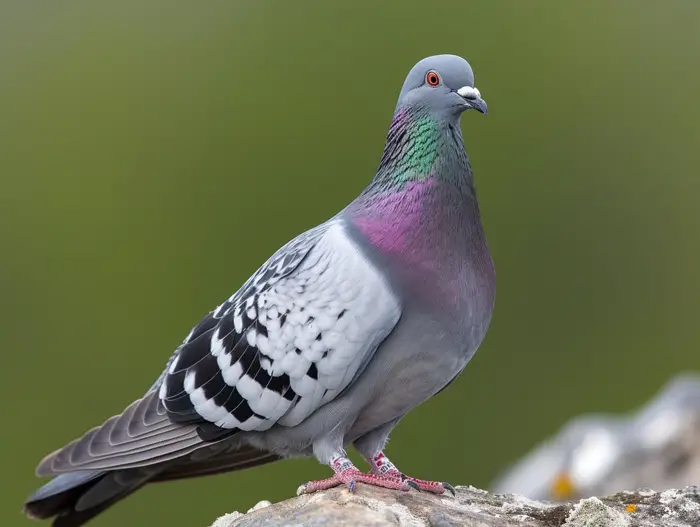
When it comes to breeding pigeons, understanding the principles of inheritance is crucial. Genes are the building blocks that pass on traits from one generation to the next. Let’s explore some key concepts in pigeon genetics:
- Dominant and recessive traits: Genes can have different forms, known as alleles. Dominant alleles are expressed even if only one copy is present, while recessive alleles need two copies to be expressed. For example, if a pigeon has one dominant allele for feather color (let’s say black) and one recessive allele for feather color (let’s say white), it will have black feathers because the dominant allele overrides the recessive one.
- Punnett squares: Punnett squares are a useful tool for predicting the offspring’s traits based on the alleles of the parents. By combining the alleles of the male and female pigeons, breeders can get an idea of the possible outcomes. For example, if both parents have one dominant allele for feather color and one recessive allele, there is a chance that some of the offspring will have the recessive trait.
- Inbreeding and outcrossing: Inbreeding involves mating pigeons that are closely related, while outcrossing involves mating pigeons that are unrelated. Inbreeding can help fix desirable traits, but it can also increase the risk of inheriting undesirable traits or health issues. Outcrossing introduces genetic diversity but may dilute desired traits. Balancing inbreeding and outcrossing is essential for maintaining genetic health and maximizing desired characteristics.
- Genetic testing: Advances in technology have made genetic testing more accessible to pigeon breeders. Genetic tests can provide information about the presence of specific genes or mutations, enabling breeders to make more informed decisions about breeding pairs. This tool can be particularly useful in identifying carrier pigeons for certain genetic disorders or selecting for specific traits.
Understanding these principles of inheritance is vital for successful pigeon breeding. By applying genetic knowledge, breeders can make informed decisions to enhance desired traits and minimize the expression of undesirable ones. Pigeon breeders play a crucial role in the development and preservation of healthy and exceptional bird populations.
Importance of Genetic Diversity
Pigeon breeding involves more than just selecting birds with specific traits. Genetic diversity plays a crucial role in maintaining the health and vitality of pigeon populations. In this section, I’ll explain why genetic diversity is important and how it contributes to the success of pigeon breeding programs.
1. Enhanced Adaptability Genetic diversity provides pigeons with a wider range of genetic variations. This enables them to adapt and thrive in different environments, making them more resilient to diseases, climate variations, and other challenges.
2. Avoidance of Inbreeding Depression Inbreeding, or mating closely related birds, can lead to a condition known as inbreeding depression. This occurs when harmful recessive genes become more prevalent in the population, resulting in reduced fertility, increased susceptibility to diseases, and decreased overall vigor. By promoting genetic diversity, pigeon breeders can minimize the risk of inbreeding depression and maintain healthier bird populations.
3. Maximizing Fitness and Performance Genetic diversity allows breeders to select birds with desirable traits while minimizing the risk of detrimental genetic effects. By introducing new genetic material through outcrossing, breeders can enhance qualities such as speed, endurance, and homing instincts, which are vital in competitive racing pigeons.
4. Preservation of Unique Characteristics Genetic diversity ensures the preservation of unique and exceptional traits in pigeon populations. It prevents the loss of genetic variations that may be necessary for future breeding programs and the development of new and improved pigeon varieties.
5. Long-term Sustainability By prioritizing genetic diversity, pigeon breeders contribute to the long-term sustainability of the pigeon population. It helps prevent the accumulation of harmful genetic mutations and reduces the risk of population decline or extinction in the face of changing environmental conditions.
Genetic diversity is a crucial consideration in pigeon breeding. It promotes adaptability, helps avoid inbreeding depression, maximizes fitness and performance, preserves unique characteristics, and ensures the long-term sustainability of pigeon populations. By understanding and valuing the importance of genetic diversity, pigeon breeders can make informed decisions that ultimately contribute to the health and success of their flocks.
Common Gene Mutations in Pigeons

As a pigeon breeder, it’s crucial to understand the various gene mutations that can occur in pigeons. These mutations can create unique characteristics and colors in the birds. In this section, I’ll discuss some of the most common gene mutations found in pigeons.
One of the most well-known gene mutations is the albino mutation. Pigeons with this mutation lack melanin pigment, resulting in a pure white coloration. Their eyes are typically pink or red due to the absence of pigmentation.
Another interesting gene mutation is recessive red. Pigeons with this mutation have a lighter and more vibrant red color compared to the normal red coloring. This mutation is recessive, meaning both parents need to carry the gene for it to be expressed in the offspring.
A spread mutation is another fascinating gene variation in pigeons. Pigeons with this mutation have feathers with a wider and more open structure, giving them a unique appearance. The spread mutation affects the way the barbs in feathers lay on top of each other.
Grizzle is another common gene mutation in pigeons, often found in racing breeds. Pigeons with the grizzle mutation have feathers with alternating light and dark bars, giving them a mottled or speckled appearance.
The dilute gene mutation affects the pigmentation of the feathers, resulting in a lighter, washed-out coloration. Pigeons with this mutation can have a diluted version of any other color or pattern.
Lastly, the saddleback mutation alters the distribution of pigment on the feather. Pigeons with this mutation have a distinct pattern where pigment is mainly concentrated on the breast and thigh areas, while the back and wings are lighter in color.
Understanding these common gene mutations in pigeons is essential when breeding for specific traits or colors. By selectively breeding pigeons with these mutations, breeders can produce unique and eye-catching birds.
Now that we have discussed the common gene mutations in pigeons, let’s explore the significance of genetic diversity in maintaining healthy and thriving pigeon populations.
Environmental Factors in Pigeon Breeding
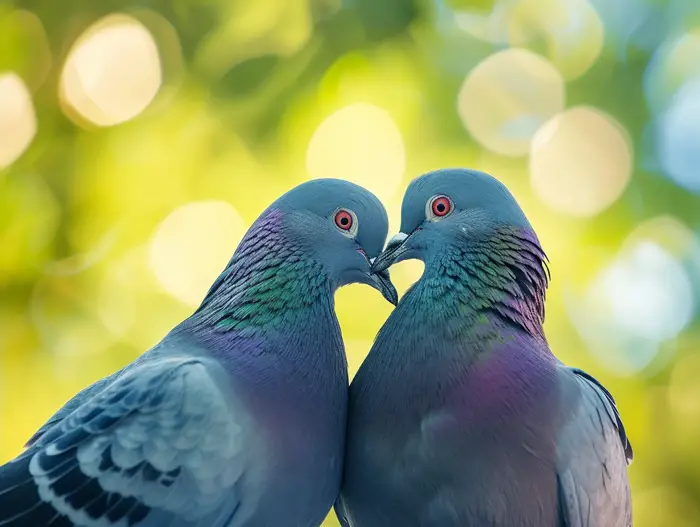
In addition to understanding genetics, there are important environmental factors to consider when breeding pigeons. These factors can impact the health and productivity of your pigeon flock. Here are some key considerations:
1. Housing: Providing a suitable and well-maintained housing environment is crucial for healthy pigeon breeding. Ensure that the pigeon loft is spacious enough to allow for proper movement and perching. It should also have good ventilation to prevent the buildup of ammonia and other harmful gases. A clean and dry loft will help reduce the risk of respiratory diseases and other health issues.
2. Diet and Nutrition: Proper nutrition is essential for successful pigeon breeding. Ensure that your pigeons are receiving a balanced diet that includes high-quality pigeon feed, fresh water, and appropriate supplements. A well-balanced diet will contribute to good overall health and reproductive success. Additionally, it’s important to monitor the pigeons’ weight and adjust their diet accordingly to avoid obesity or malnutrition.
3. Lighting and Temperature: Pigeons thrive in a specific range of temperatures and lighting conditions. Ensure that the loft is well-insulated to maintain a stable temperature within this range. Adequate lighting is also important to regulate the pigeons’ breeding and molting cycles. Natural light is ideal, but if necessary, artificial lighting can be used to supplement.
4. Hygiene and Sanitation: Maintaining good hygiene and sanitation practices is vital in preventing the spread of diseases among your pigeons. Regularly clean and disinfect the loft and nesting areas to eliminate parasites and pathogens. Remove droppings and bedding material promptly to minimize the risk of bacterial or fungal infections. Implement a strict quarantine protocol for new pigeons to prevent the introduction of diseases to your flock.
5. Stress and Socialization: Pigeons are social animals that thrive in a peaceful and stress-free environment. Avoid overcrowding the loft and allow for adequate space for each pigeon. Limit unnecessary disturbances that can cause stress, such as loud noises or sudden changes in the loft’s surroundings. Proper socialization and gentle handling will help build trust and reduce stress levels among your pigeons.
By paying attention to these environmental factors, you can ensure a conducive and healthy breeding environment for your pigeons. Remember, a well-maintained and stress-free environment will contribute to the overall success of your breeding program. Keep learning and adapting to provide the best possible care for your pigeons.
Nutrition and Care for Breeding Pigeons
Breeding pigeons involves more than just genetics. It is crucial to provide proper nutrition and care to ensure the health and well-being of the pigeons and their offspring. In this section, I will discuss the important factors to consider when it comes to nutrition and care for breeding pigeons.

Feeding the Right Diet
A balanced diet is essential for breeding success. Pigeons need a diet that is rich in essential nutrients, including proteins, carbohydrates, fats, vitamins, and minerals. Here are some key points to keep in mind:
- Provide a commercial pigeon mix or specially formulated breeding mix to meet their nutritional needs.
- Supplement their diet with fresh fruits and vegetables, such as leafy greens, carrots, and apples.
- Offer grit and mineral supplements to ensure proper digestion and bone health.
- Ensure access to clean, freshwater at all times.
Maintaining Proper Hygiene
Maintaining a clean and hygienic environment is crucial for the health of both the pigeons and their offspring. Here are a few tips:
- Clean the loft regularly to remove droppings and debris.
- Provide clean nesting material, such as straw or wood shavings.
- Keep food and water containers clean and free from contamination.
Providing Adequate Housing
A suitable housing environment is essential for breeding pigeons. Here are a few considerations:
- Provide enough space for the pigeons to fly and exercise.
- Ensure good ventilation to prevent respiratory problems.
- Maintain appropriate temperature and lighting conditions.
Minimizing Stress and Promoting Socialization
Stress can negatively impact breeding performance. Here’s how to minimize stress and promote socialization:
- Avoid sudden changes in the environment, such as loud noises or disruptions.
- Provide enough perches and space for pigeons to rest comfortably.
- Allow pigeons to interact and mate naturally.
Proper nutrition and care are vital aspects of breeding pigeons. Providing a well-balanced diet, maintaining hygiene, ensuring adequate housing, and minimizing stress contribute to the overall health and breeding success of pigeons. By paying attention to these factors, breeders can create a conducive and healthy environment for their pigeons to thrive.
Conclusion
Understanding pigeon genetics is crucial for successful breeding. By grasping key concepts such as dominant and recessive traits, breeders can make more accurate predictions about the traits their offspring will inherit. The use of Punnett squares allows for the visualization of these predictions, aiding in the selection of desired characteristics.
Inbreeding and outcrossing play vital roles in maintaining genetic health and maximizing desired traits. Breeders should carefully consider these breeding strategies to create a diverse and robust gene pool.
Genetic testing has become increasingly accessible to pigeon breeders, providing valuable insights into the genetic makeup of their birds. This information can greatly inform breeding decisions, leading to more successful outcomes.
In addition to genetics, environmental factors play a significant role in pigeon breeding. Proper housing, nutrition, lighting, hygiene, and stress management are all crucial for maintaining the health and productivity of the flock.
By providing the right care and nutrition, minimizing stress, and promoting socialization, breeders can ensure the overall well-being and breeding success of their pigeons.
A comprehensive understanding of pigeon genetics, combined with proper environmental factors and care, is essential for achieving successful and sustainable breeding outcomes.


![Do Pigeons Eat Mice? [Everything You Need To Know]](https://avicultureblog.com/wp-content/uploads/2023/01/Do-Pigeons-Eat-Mice.jpg)
